The best way to extend your yard into new areas and increase the amount of green space surrounding your home is to plant grass seeds.
You can also improve the appearance of your existing lawn by planting new grass seed if it is looking a little dingy. Using grass seed, you can even entirely replant your lawn with fresh grass. In this article, find out why is my grass seed not growing.
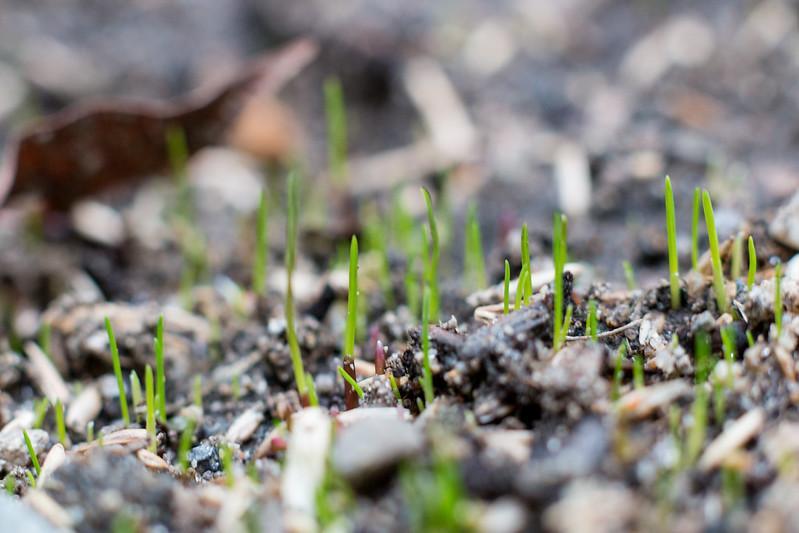
Grass seeds won’t grow if buried too deep or sitting on the surface.
There are instances when we forget that grass seeds are living things and that they require certain conditions such as adequate heat, water, air, and light for them to develop appropriately. If any of these are lacking, the grass seeds won’t be able to germinate properly.
Various variables might contribute to poor or non-existent grass growth from seeds. The following are some of the most typical reasons why your grass seed isn’t growing:
- Unhealthy Soil pH
- Soil Compaction
- Herbicide Applications
- Improper Seeding Rate
- Improper seed-to-soil contact
- Improper Watering
- Inadequate Sunlight
- Lack of soil nutrients
- Low Soil Temperatures
- Poor Quality or Expired Seed
- Seeding At The Wrong Time
- Too Much Foot Traffic
It is essential to diagnose the problem/problems accurately and then make the necessary adjustments to fix them. This can encourage dormant grass seeds to germinate, thus rescuing your grass seeds. Keep reading to learn more!
Your Grass Might Have A Long Germination Time
If you find yourself asking, “Seriously, how long does it take for grass to germinate?! ” then you are not alone. Just be aware that many different things affect grass seed germination. Most essential of which are grass seed type and germination time.
In most cases, the germination process takes anywhere from five to ten days. However, sometimes grass seeds can take as long as 30 days to germinate. So, if your grass seeds do not germinate right away, just give it a bit of time.
It is very much possible that you have grass with a long germination time or slow growth. Nevertheless, here are germinating times for a few common turf grasses.
Germination Times For Different Grasses
| Grass Type | Germination Time |
|---|---|
| Ryegrass | 5 to 10 days |
| Fescue grass | 7 to 14 days |
| Bentgrass | 10 to 14 days |
| Kentucky Bluegrass | 14 to 30 days |
| St. Augustine grass | 7 to 14 days |
| Bermuda grass | 3 to 7 days |
RELATED: How To Plant Grass Seeds On Hard Dirt For Best Results? A Simple & Easy Guide
Why Is My Grass Seed Not Growing?
Now, let’s take a closer look at each of these issues so that we can assist you in diagnosing the problem with your grass seed and get you back on the right track.
Unhealthy Soil pH
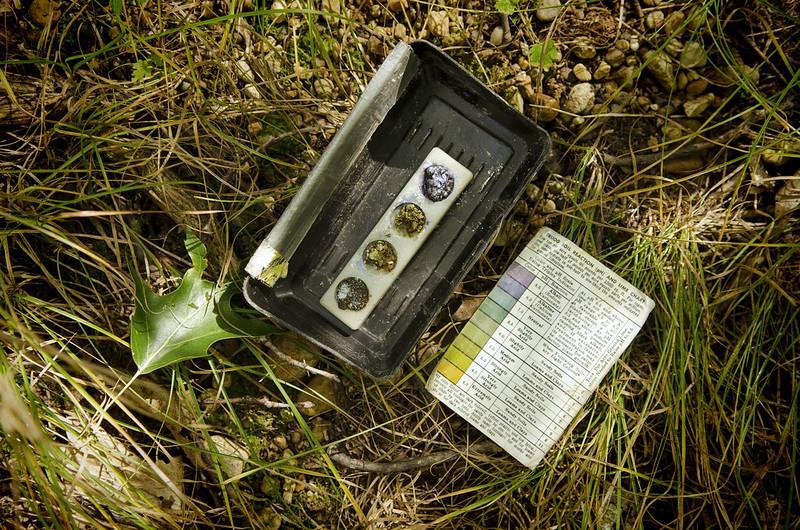
Most types of grass grow best in soil with a pH between 6.0 and 7.0.
Having healthy soil is the first step in maintaining a healthy lawn. The proverb “you are what you eat” applies just as well to plants as it does to humans. Since the nutrients present in soil constitute the grass’ food source, maintaining healthy soil in your grass yard is a crucial component of proper lawn maintenance.
The pH of your soil is one of the most critical parameters that determine the nutrients that are accessible to your grass. Grass seed will not germinate successfully in soil that has an imbalanced pH. So, if you have done everything else correctly but the grass growth is still poor, it is time to get the soil pH tested.
The soil pH test will tell you whether or not the pH of your soil is suitable, as well as whether or not you need to amend it with lime or sulfur to get the optimum balance for your grass. Soil with a pH less than 6.0 can cause grass seed growth and establishment issues.
Solution
Lime can be used to neutralize the soil’s acidity if the pH level is too low. On the other hand, if the soil is too alkaline, use sulfur or organic compost to set things right.
Just make sure you test the soil properly and add the correct amount of lime or any other soil amendments that are needed.
Soil Compaction
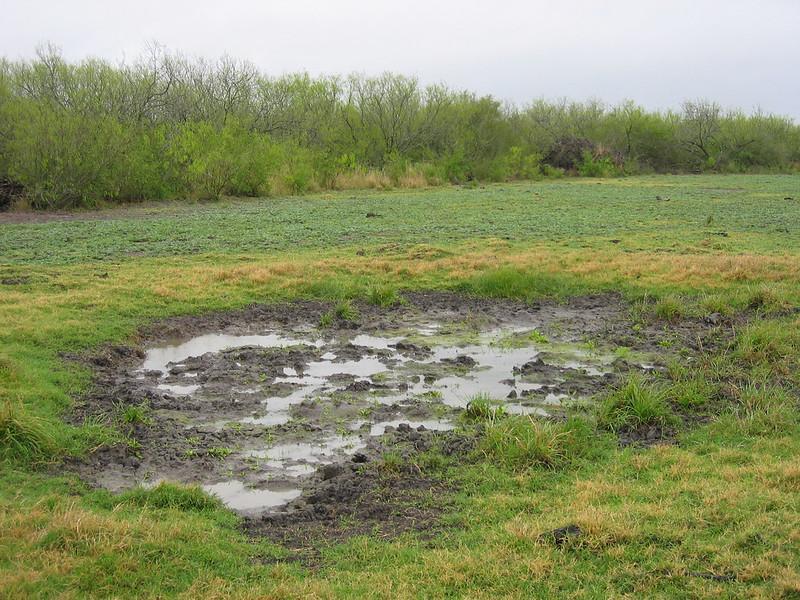
Soil compaction negatively influences all phases of grass growth, including seed germination.
Another possible explanation for why your grass seed is not germinating is because the soil in which it was planted is too hard, too compacted, or contains too much clay.
Even yet, a slightly compacted soil helps hasten grass seed germination by promoting good seed-to-soil contact. However, an excessively compacted soil can drastically limit and hinder grass seed germination. Grass seeds won’t sprout in compacted soil as they lack access to oxygen, and without breathing, they cannot use their energy reserves.
During the first several weeks after germination, the root system develops rapidly, delves deeply into the soil, and spreads out to create an extensive network. This will not take place, though, if the soil in your grass is excessively compacted.
As a consequence, your grass won’t be able to take root in the lawn, which will cause certain areas of the yard to be sparse and patchy.
Solution
There are a few different approaches one can use to break up tightly packed soil. For instance, if you have a smaller lawn, you can lessen the amount of soil compaction by removing any thatch or dead grass, raking the soil thoroughly, and clearing away any debris.
However, on more extensive lawns, you might want to use a core aerator, which digs out small plugs of soil from the surface of the ground, thus reducing soil compaction.
Herbicide Applications
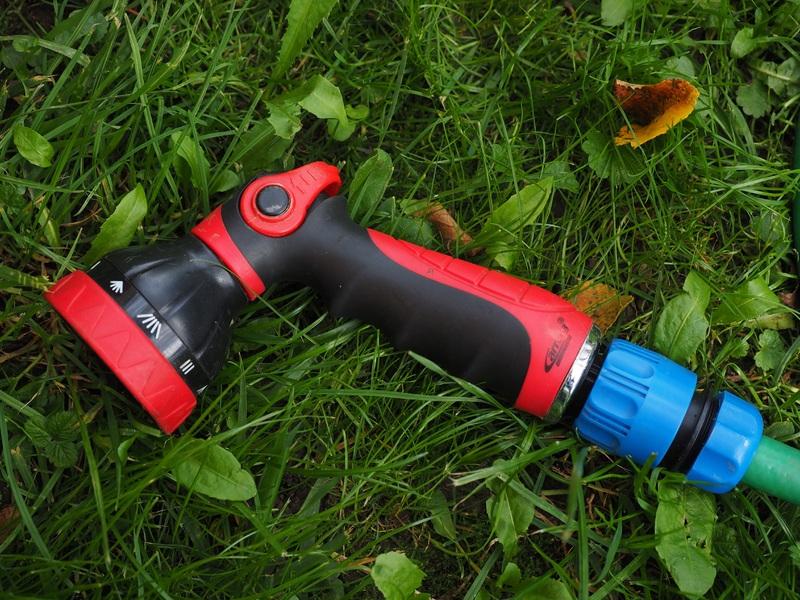
After applying a pre-emergent weed killer to your lawn, you may have to wait anywhere from one month to six months before you can seed your lawn. This is because the amount of time it takes for various types of pre-emergent herbicides to break down in the soil varies significantly from one formula to the other.
For instance, If you want to put grass seed on a lawn that has been treated with the herbicide Atrazine, you will have to wait for around six months. In contrast, lawns treated with 2,4-D can be seeded as soon as four weeks.
Solution
Wait at least six to eight weeks before sowing the seeds to guarantee that the pesticide does not affect germinating grass seeds.
In addition, sowing seed after applying a pre-emergence weed killer disrupts the chemical barrier that was placed on the surface of the soil, which increases the likelihood that weed seeds will also germinate.
Furthermore, any weeds and grass that doesn’t look its best around the lawn should be removed and killed before planting any seeds.
RELATED: How & When To Water New Grass Seeds For A Perfect Lawn!
Improper Seeding Rate
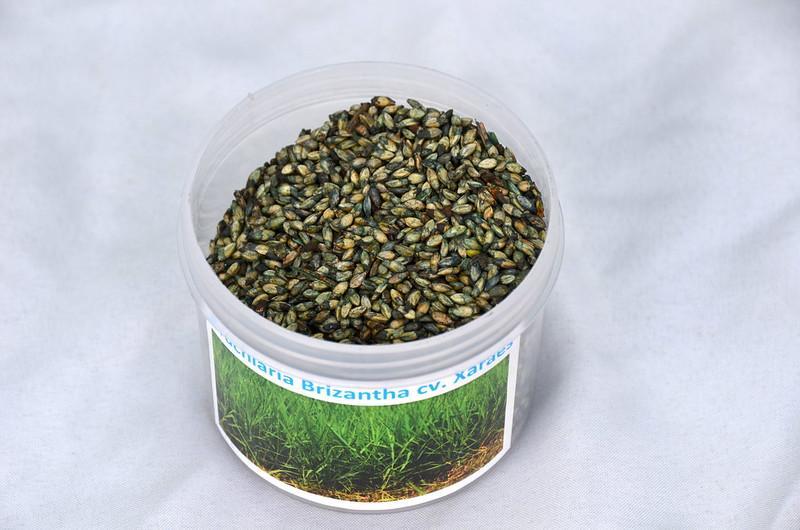
Using too much or too little grass seed can lead to unhealthy grass growth & germination.
Most homeowners plant way too much seed, resulting in unusually dense tufts later in the year. Typically, the sowing rate on a bag of grass seed is listed as a range. If you want to grow a thick and healthy lawn, you should follow this rate. This is especially the case when considering the over-seeding rates for lawns.
An excessive number of seeds can lead to unnecessary competition for resources such as nutrients, light, and water if it is not managed correctly. On the other hand, if you use too few seeds, you may find that certain portions of your lawn are sparse, spotty, or thin.
Solution
For most grass types, whether suited for a cool or warm season turf, you will require anywhere from one pound to five pounds of seed for every one thousand square feet of yard space.
Make sure you distribute the grass seed evenly across the length of your yard. This will allow the grass seeds to germinate in an environment free of competition and prevent the turf from becoming uneven or thin in certain areas.
Improper Seed-To-Soil Contact
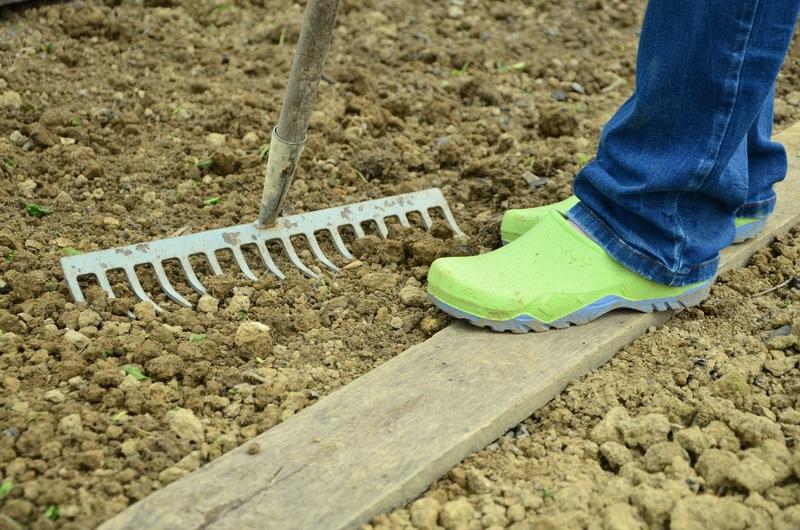
After sowing, push the seed lightly into the soil using a rake to increase seed-to-soil contact.
Seed-to-soil contact is an often ignored but critical factor in seed germination. It would help if you didn’t plant grass seeds too deeply or too shallowly. In order for your newly planted seeds to germinate and flourish, there must be just the right amount of surface area contact between the seed and the soil. Contact with the ground is the primary factor that enables seeds to absorb moisture and initiate growth.
Grass seeds can’t germinate if they are not adequately covered with soil. Unprotected grass seeds are also susceptible to being consumed by various animals, including birds. However, if you bury your grass seeds too deeply, they won’t be able to break the surface of the soil and germinate into new grass plants.
Solution
A good seed-to-soil contact can be achieved by blanketing a thin layer of soil over your grass seed and then using a lawn roller to lightly compact the soil, so it sits directly on top of the seeds. You may also use a power machine to sow seeds into your yard for even better results. Mowing the existing grass before sowing can also help improve seed-to-soil contact if you are seeding an already established lawn.
RELATED: How Long Does It Take For The Grass Seeds To Grow? Growing Grass The Easy Way!
Improper Watering
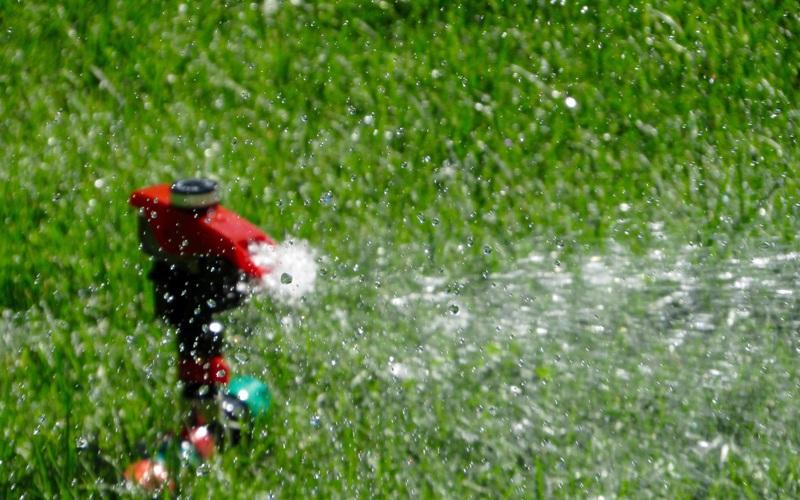
Most lawns require 1 to 1.5 inches of water each week from rain or irrigation.
There are times when the grass seeds will not germinate because they are not receiving sufficient water. For their growth to get off the ground, seeds need water.
If the ground is too dry, the seeds will remain dormant, but if the soil is moist, they will begin germinating. Also, if your new grass seeds grow in low regions but not high ones, this is typically due to a water shortage in the higher areas.
It is essential to sow grass seed on moist ground and constantly irrigate the area once it has been planted. However, you can’t just water your newly seeded grass by pouring a ton of water on it every once in a while if you want it to thrive.
Both an abundance of water and a deficiency of it are undesirable conditions for the growth of your lawn. An excessive amount of watering can wash away seeds that have not yet begun to take root.
Solution
In general, a lawn should be watered thoroughly but infrequently; however, when you are watering for fresh grass seed, you must water every day. If you don’t, the seed won’t germinate properly. Therefore, water the area thoroughly to a depth of between 6 and 8 inches several days before you plan to plant your new seed.
Following that, new grass seed should be watered for five to ten minutes immediately after planting to saturate the top few inches of soil with moisture thoroughly.
Inadequate Sunlight
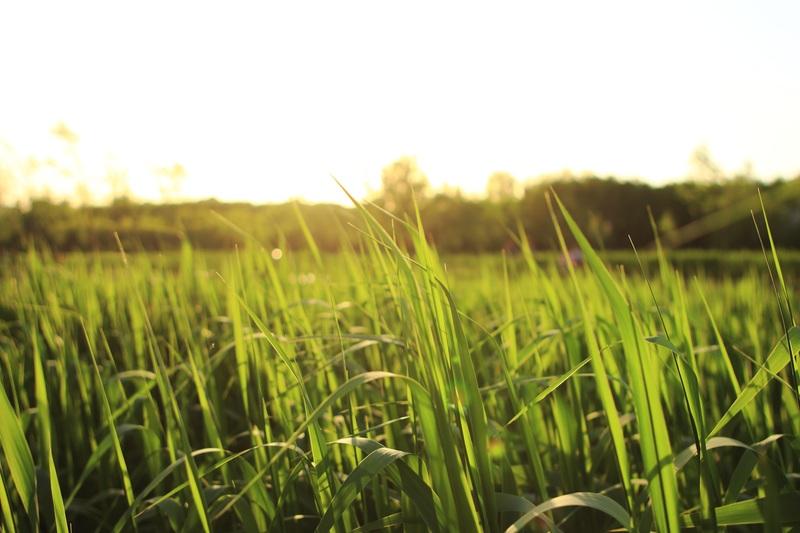
While seeds need heat, water, and air to germinate, they also need sunlight.
Are you noticing that the shaded areas in your yard don’t allow the grass seed to grow to its full potential? Or has the amount of sunlight that reaches your yard decreased since you planted the seeds because of overcast weather?
This is due to the fact that once grass seeds germinate, they require sunshine to grow and become firmly established in the soil. In other words, grass seed needs to be sown at the appropriate depth to utilize the light for photosynthesis properly.
Photosynthesis is a process by which plants produce their food. If there is no photosynthesis, grass seeds won’t be able to grow even if they manage to germinate.
Solution
When planting the seed, rake it in, so it is about three coins (stacked) beneath the surface. This will allow the seed enough room to grow and receive light while protecting it from the elements. Furthermore, if your yard has any shaded areas, pick a grass seed variety known to thrive in those conditions. Several grass seed blends available in the market are made specifically for shady lawns.
Lack Of Nutrients
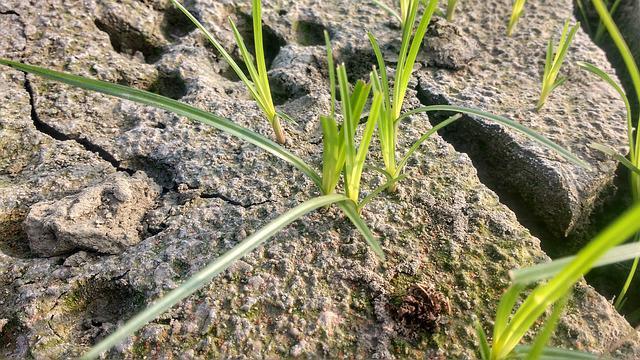
Fertilizer gives grass seed or newly sprouted grass the nutrition it needs to grow and flourish.
When growing grass from seed, having adequate nutrients in the soil is absolutely necessary. New grass requires nourishment to develop and thrive. So, if you have planted the seeds but are not seeing healthy development, it may be time to apply fertilizer. Fertilizer delivers concentrated nutrients to grass seed or newly germinated grass.
Even if you can apply fertilizer at any time (or not at all), fertilizing grass at selected times in the growth cycle might send your grass into a “hulk mode.” This is especially true if you fertilize early in the growth cycle. In contrast to existing lawns, new grass benefits from increased phosphorus, a vital plant nutrient that promotes strong, deep roots.
So, keep that in mind when fertilizing your new grass seeds.
Solution
New grass seeds require a starter fertilizer that contains more phosphate and nitrogen and is quick-release, making nutrients readily available to the germinating seeds and newly sprouting grass. In addition, seeds are better able to take in additional potassium when quick-release nitrogen is used. However, you should avoid using weed and feed products on your lawn since they can prevent fresh grass seeds from sprouting.
Low Soil Temperatures
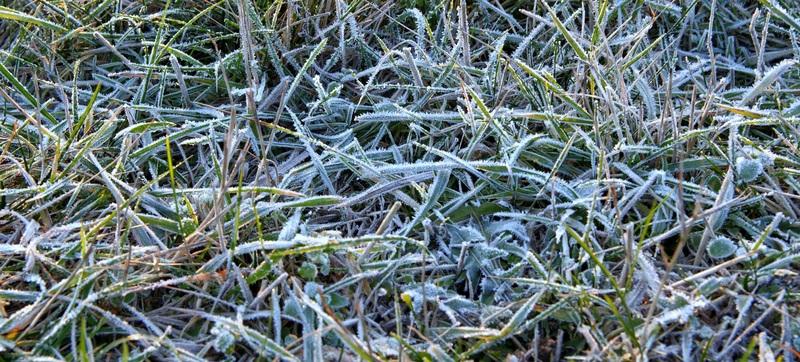
Regular grass seed cannot grow in soil temperatures below 9 degrees.
When growing grass from seed, the temperature of the soil is one of the most critical things to consider. If the soil temperatures are not optimal for the grass species you are sowing with, grass seed will not germinate no matter how long you leave it in the ground. So, before you start planting seeds, check to see that the temperature of the soil has been within the ideal range for at least two or three days.
- Although the ideal temperature range for rooting might vary significantly from one turfgrass species to the next, most cool-season turfgrasses achieve their best root growth when soil temperatures range from 50 to 65 °F.
- Warm-season grasses show the best growth when daily air temperatures reach around 80 °F and 95 °F. This corresponds to temperatures of roughly 65 to 75 degrees Fahrenheit in the soil.
Solution
Before you start sowing, you should check the temperature of the soil by using a soil thermometer. Don’t worry if you don’t have a soil thermometer. You may time your seeding by using the local air temperatures. The temperature of the soil is frequently 10 degrees colder than the air during the day.
Poor Quality or Expired Grass Seeds

Only use high-quality grass seeds when planting new grass.
If you want your grass seed to germinate successfully, there is one more thing you need to think about: the quality of the grass seed.
If you have obtained high-quality seeds and have taken the appropriate steps to care for them, you can anticipate that 90–95 percent of your seeds will germinate under perfect conditions. Unfortunately, many low-quality grass seed types have a germination rate that is significantly lower than average. In other words, this means that for every 100 seeds you plant, only 50 may successfully germinate.
Investing in some grass seeds that are available at a low cost could help you save some money. However, this will increase the price because fewer grass plants will grow from a greater amount of grass seeds.
Solution
Not all grass seed kinds and combinations are the same. When purchasing grass seed, make sure to look for a decent level of quality and check the date printed on the packaging to ensure that you are not obtaining old or expired seed.
Seeding At The Wrong Time
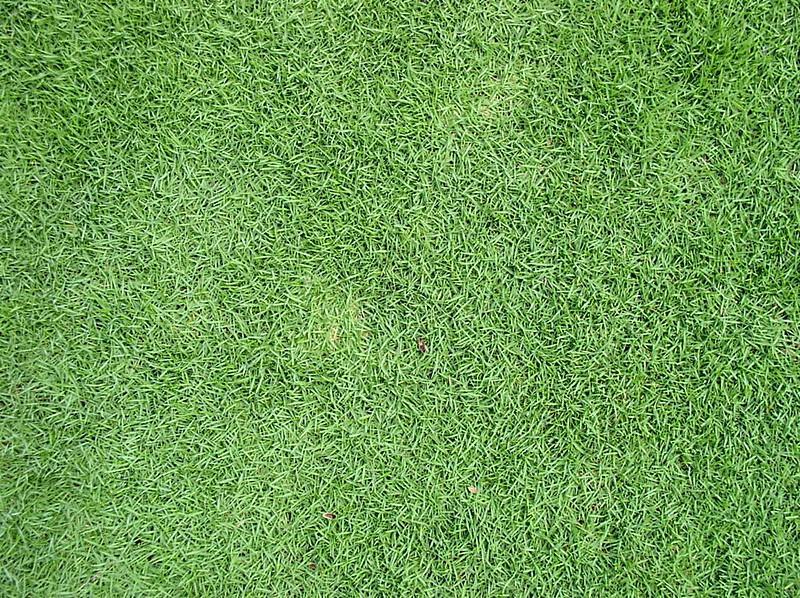
Bermuda grass should be planted as soon as the risk of frost has gone in late spring.
Proper timing separates delicious success from something less when seeding new lawns, mending rough places, and replacing existing turf. Grass grows the fastest and strongest when your planting season coincides with the natural times of active growth of the seeds. The optimal time to plant grass seed is usually determined by the environment in your area and the sorts of grasses that grow there. For instance,
- Plant cool-season grass seed, as a general rule, at least 45 days before the anticipated date of your first fall frost, before soil and air temperatures begin to decline.
- Late spring to early summer are the ideal times to sow warm-season grass seeds. Sow grass seed when the soil temperature is at least 70 degrees and the daylight temperature is 80 degrees.
Too Much Foot Traffic

Too much foot traffic on newly seeded lawns can make the soil hard, making germination difficult.
It is essential to keep traffic off areas that have recently been seeded because of potential damage. Even light foot traffic from you, your children, or your dog can be detrimental to developing your grass’s seedlings.
Also, it goes without saying that you should not drive your car (or even your lawn tractor) across the lawn while it is still in the early stages of growth. When you have completed sowing seeds in the area, the region should be treated as a no-traffic zone.
In order to lessen the amount of foot traffic in the region, you should try to water the area with a sprinkler rather than by hand if at all possible.
Final Thoughts
The fact that your brand-new grass looks to be sprouting slowly isn’t really a reason to be overly concerned all of the time. If you have done everything possible to assist the growth of grass seeds, the conditions are ideal, and you have properly covered and watered your seeds, take additional steps to ensure the development of grass seeds.
This is usually done by testing and adjusting the pH of your lawn, fertilizing, and discontinuing the use of any pre-emergent weed killer. However, even when this does not work, you always have the option of working with a professional lawn care company to do the job for you.
Frequently Asked Questions
How long does it take for the seed to turn into the grass?
When you first put grass seed in your yard, it may appear as though it would take a lifetime for the grass to begin to grow. However, the vast majority of grass seeds will start growing in around 10 to 14 days, although there are instances in which it can take up to 30 days.
What happens if you put too much grass seed down?
You should always use the recommended amount of grass seeds to grow grass in your yard. If you put down too much grass seed, you will increase competition, which will cause your grass seedlings to suffer after germination due to a lack of sunlight, soil nutrients, and water.
Will rain wash away my grass seed?
Erosion of the soil, which occurs when the top layer of soil is worn away by water, is a typical result of persistently heavy rainfall. If you sow fresh grass seeds just before the onset of a rainstorm, there is a chance that seeds will be swept away by erosion.
How can I encourage my grass to grow?
Planting the right grass seed for your climate and adhering to an appropriate lawn care schedule are the two best ways to help the grass to grow quickly. Additionally, avoid walking on a freshly sown lawn. The soil beneath your lawn may get impacted due to foot traffic, making it difficult for grass seeds to germinate.
How do I protect my new grass seed?
Covering your precious recently planted grass seed with polythene sheeting provides excellent protection not just from birds but also from environmental elements. If you do this, you will also see an improvement in the rate at which the grass seeds germinate.
Sources for Further Reading
Yard and Garden: Establishing a Lawn from Seed – Iowa State University Extension & Outreach
Grass seed germination rates – Agriculture and Natural Resources, University of California
Germination and Seedling Emergence – Forage Information System, Oregon State University
Editor’s Recommendations
Top 3 TruGreen Alternatives & Competitors | Is TruGreen Worth The Money?
How To Correctly Use Potash On A Lawn For The Best Results?
What is the Best Temperature to Plant Grass Seed? A Comprehensive Guide







